If you’re not familiar with the phrase “conscious consumerism”, I’m here to break it all down for you. The world we live in today is becoming increasingly transparent; technology has democratized the many ways in which we do business and communicate. As a conscious consumer, this is pretty big, since never before have we had so much access to knowledge to empower us in our purchase decisions.
But before we get into the ways in which you can embrace conscious consumerism, let’s revisit what it means:
What is conscious consumerism?
Conscious consumerism is all about being more mindful of your purchase decisions as a consumer. What brands and products do you support? How are you voting with your dollars to ensure funding supports a business that you feel aligned with based on your values? It’s up to us (the consumer) to understand who we do business with, and to support those that are taking action to improve and contribute to a healthier planet and humankind.

SAP Next Gen Lab, NYC
It’s said that 1/3 of Americans will even be increasing the amount they spend on “good” products and services this year*. That’s a positive thing, as long as those brands and businesses we are supporting are authentically running an ethical and sustainable business. We are truly in an age of rising ethical importance in business, with demand for authentic and “good” businesses not only being celebrated but expected. This is especially important in massive global industries such as retail and fashion, where historically many practices have been identified and called-out out for being unethical and unsustainable.
Curious to see more firsthand, I attended the largest fashion and retail trade show worldwide (the NRF 2020 – National Retail Federation) with over 40,000 people to share visionary ideas, build visionary partnerships and experience visionary technology. I was pleased to meet a handful of conscious entrepreneurs there and was inspired by many brands stepping up and getting smart when it comes to running a sustainable business. I met some incredible leaders with big visions who are working to make the world a better place and was surprised to see just how many (if not all brands there) are leveraging technology to help their businesses become more sustainable.
Since the show’s focus was fashion and retail, this post will focus mostly on the fashion and retail industry.
Why does conscious consumerism matter?
What we buy literally financially dictates how the world goes ’round. For instance, worldwide e-commerce revenue alone is expected to rise from $481.2 billion in 2018 to $712.9 billion by 2022. Will that money go into the hands of ethical business, or will it be funneled through to companies that don’t have sound values and operations? This is true for industries outside of fashion as well, such as one of my personal favorite industries of travel (ironically one of the most inherently unsustainable industries). But as we learn and advance we grow to embrace ways to practice sustainability in travel too, which you can read about here.
We are armed with the power to help contribute and shape the world we wish to live in – for ourselves, animal friends, plant friends, our current or future family and generations, and all kinds of stakeholders. The important thing to remember is that every single action we take has a net effect on the planet and its people in one way or another. Let’s make sure those actions are netting positive.
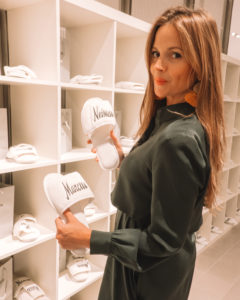
SAP Women’s Forward Event during NRF 2020; Dress by Cuyana; Earnings handmade from local women in the Atlas Mountains of Morocco
How to embrace conscious consumerism:
Observe a company’s values and ethics: what matters to you most? Do your beliefs align with how brands show up in the world? Has your perspective shifted and is it time to reconsider if that brand feels right for you? Maybe a business supports a charity that you love, or if you’re vegan that could mean a higher focus and consideration about the company’s policy on animals regarding product and operations. Do your homework and make sure brands check out according to some of the principles below. I also love using Positive Luxury as a guide and for inspiration in fashion as the platform has supported conscious consumerism for a while. Also, watch my interview with Billy Footwear to learn from their approach to values and inclusivity which infuses all that they do.
Check what materials are used in products: Pay close attention here as this is a tricky and deceiving area of business! Due to unsustainable farming practices, if we do not work to transform farming into a regenerative process we won’t be able to grow anything in the years to come. Some companies are innovating with material development and working with regenerative farms to create sustainable fabrics. As a conscious consumer, it’s important to look for these efforts. Here are some common and newer materials that you can easily keep your eye on when purchasing consciously:
- GOTS Certified Cotton is one of the best options on the market, today. It ensures, not only a clean fabric but an honest process from start to finish.
- Hemp is a very flexible material – the actual hemp plant even absorbs more carbon than trees!
- TENCEL, an innovative material that’s been created from sustainably-harvest eucalyptus trees! They have a closed-loop system where solvents and water are continuously reused.
- Full Grain Vegetable Tanned Leather. Leather processing uses a lot of chemicals that can end up in waterways. Veggie-tanned does not use any chemicals, but still creates a lasting leather good. I have a bag by Findlay that has embraced this beautifully in addition to a purpose-driven business model I highly support.
- Think zero-waste. Identify zero-waste fashion brands that create minimal waste by using techniques such as pattern cutting and using “scraps” for different items.
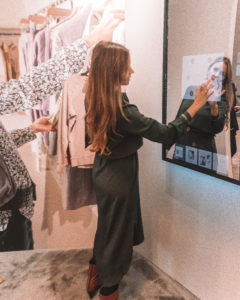
Playing with transparent tech and the mirror
Embrace slow fashion:
The world, unfortunately, got into this Fast Fashion craze not so long ago which is just the worst. It’s basically the polar opposite of what being a conscious consumer is all about. A desire for profit led us down a negative path and we’ve been battling the repercussions for years now, working towards regeneration. While I do embrace and support brands looking to change the game, their actions most consistently align for consumers to see their intentions as authentic and good, as opposed to piggybacking off what we crave to see in the world.
One thing you can do now is to start your capsule wardrobe. I started a capsule wardrobe two years ago. Every so often if I feel that I need something specific to my wardrobe, I’ll buy a usually a higher-priced garment from a sustainable brand that I’ve done my research on. These are pieces that I’ll hopefully have for a very long time; classic items that I love and really work well for me and my lifestyle.
Visit my shop for some inspo!
Limit your shipping: In 2017, Amazon’s deliveries alone emitted about 19 million metric tons of carbon, according to an estimate from 350 Seattle, a group that works to combat climate heating. I’m not a huge online shopper, but brands like spotsize make it easy for you to know your shoe size to avoid returns of goods (equating to excess packaging and CO2 from trafficking items). In fact, 70% of footwear is returned due to incorrect sizing. That’s a lot of waste in transport! But technology like spotsize allows you to measure your exact shoe size from a variety of brands, which helps to limit shipping and returns. I also believe the best thing you can do is go straight to the source of where something is made if you’re lucky enough to do so. If not, a visit to the brick and mortar shop is always safe, just avoid the tissue wrap and bag if you don’t need it!
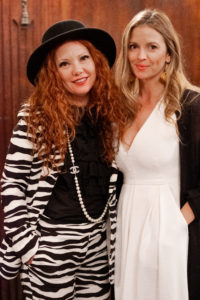
Catching up with Runway of Dreams CEO & Founder, Mindy Scheier
Ensure fair labor practices are met: how laborers are paid and treated at work is a huge consideration. Does the brand pay the manufacturer fairly? How does a business empower people locally to drive local economic prosperity? One company I love that does this beautifully is Hiptipico. They are a relatively new brand based in Guatemala and employ local women and girls to craft beautiful Mayan items such as camera straps and handbags. Making sure the business is inclusive is also really important! Runway of Dreams is an excellent example of embracing inclusivity as a business model, and has a powerful story you can learn more from here.
Learn about the factory, operations, and production methods: where a company produced its goods matters. By assembling as much product as possible close to the source you are also limiting the environmental shipping costs. Also take into consideration what goes into creating a product, as you’d be shocked to learn how much resource it takes! According to Levi Strauss, 3,781 liters of water are used during the production and use phase of ONE pair of 501® jeans and 33.4 kg of CO2 is created throughout its lifetime (this includes growing cotton, processing the denim and washing at home). Realizing that needed to change, the company launched an innovation effort across its product lines, creating the Wellthread™ (sustainability-first) collection. In doing so, Levi’s created four guiding principles: materials, people, environment, and process.
Find a network to grow with: During the NRF conference, I also paid a visit to the SAP Next-Gen lab where the global software enterprise giant is making some serious change happen. This space is dedicated to helping businesses tap into the right technology to support their business models, enabling conscious consumerism to really thrive. The lab’s mission is a purpose-driven innovation university and community aligned with SAP’s commitment to the Sustainable Development Goals. And all that conscious consumerism embodies really comes to life here! The program connects companies and citizens around the world to a plethora of experts and professionals to reimagine the future of industries. This includes disruptive innovation with startups, building skills for digital futures, and using new mindsets such as science fiction thinking to accelerate “Innovation with Purpose”. This is just one example of how you can get involved and collaborate with others who share your values.
- SAP Next Gen Lab, NYC
- Ursula Ringham of SAP taking in the view
- A pretty place to dream big
Follow SAP to better understand how your brand and business can become more conscious and run at its best.
As you can see, there are many aspects to evaluate when it comes to practicing conscious consumerism! This is especially true in relation to the fashion industry! I hope you feel a little more inspired, empowered, and informed of the many ways in which you can approach conscious behaviors. We have more power than ever before to make positive change happen. Live your values and collaborate with others who are on a similar path to a brighter future. Thank you for reading!
This post was written in a paid partnership with SAP. As always, all opinions and insights are my own!
Sources: GoodMustGrow Conscious Consumer Spending Index Study Shopify Fashion Industry Report Business Insider Huffington Post
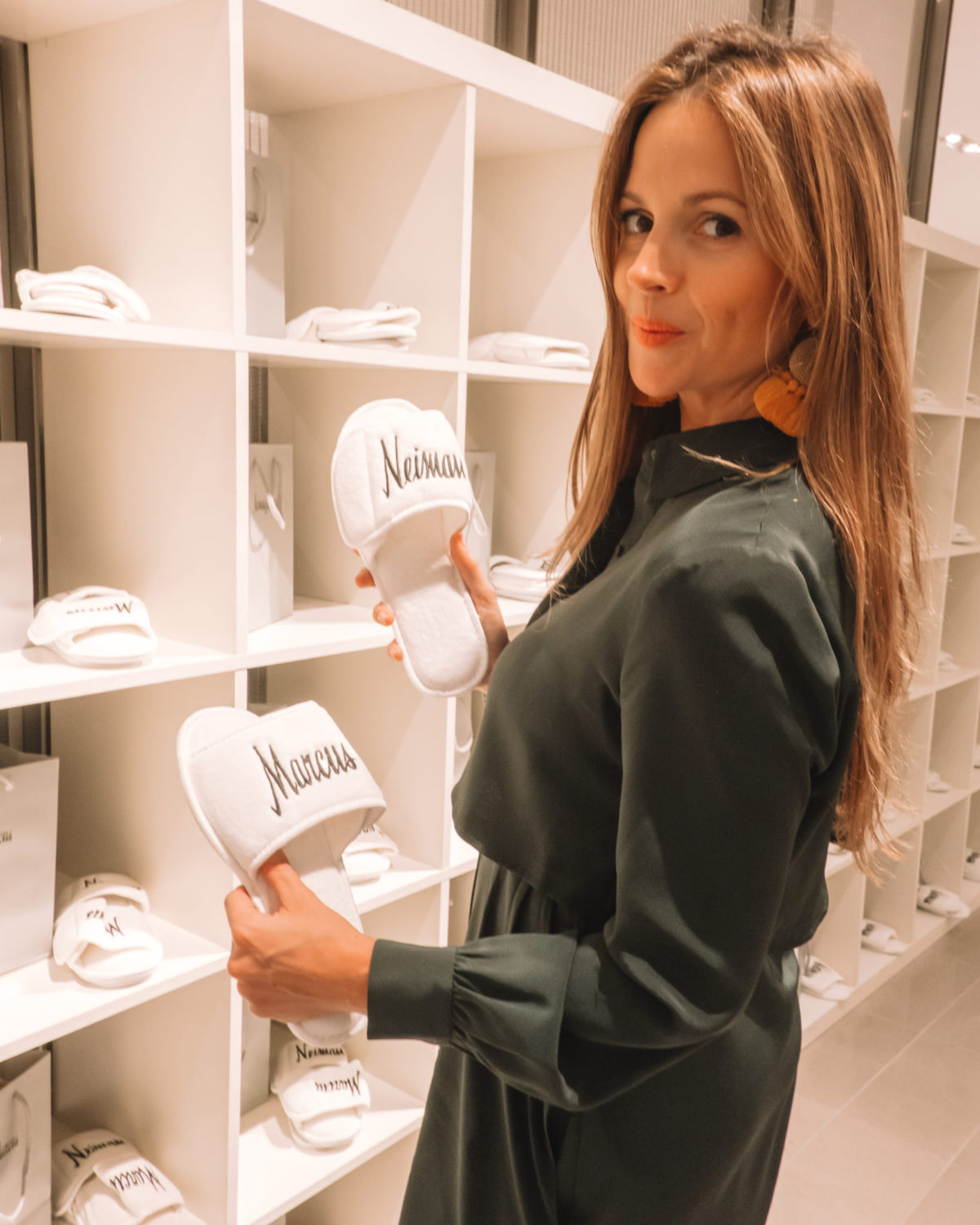





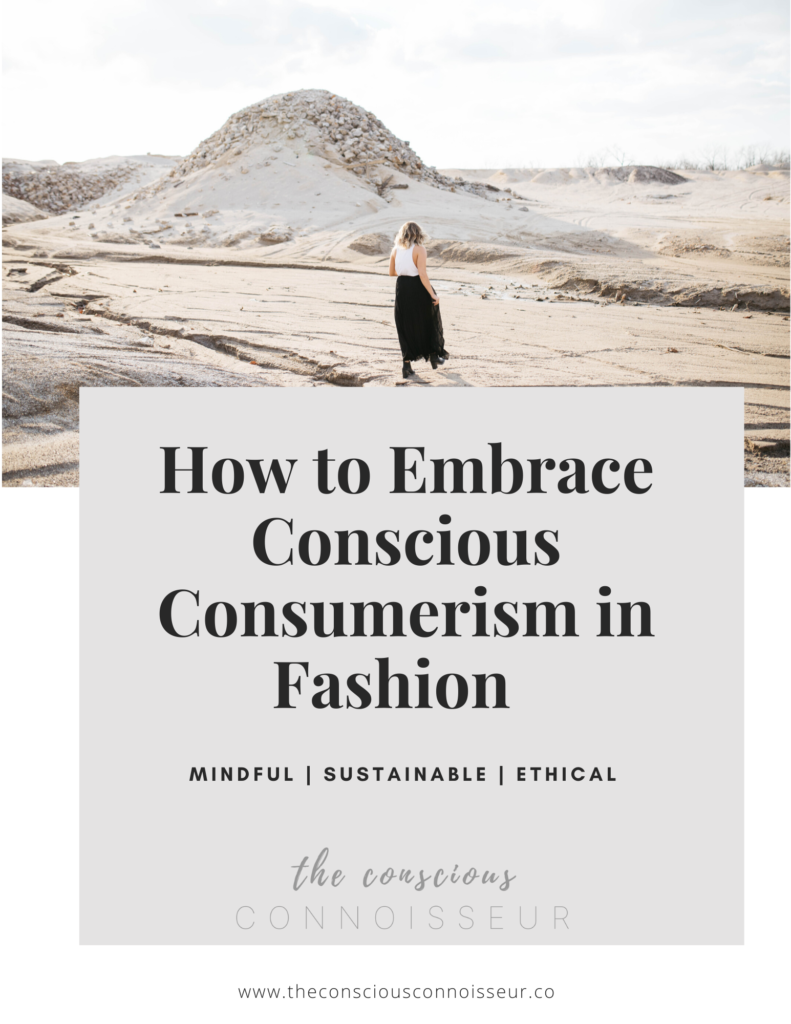
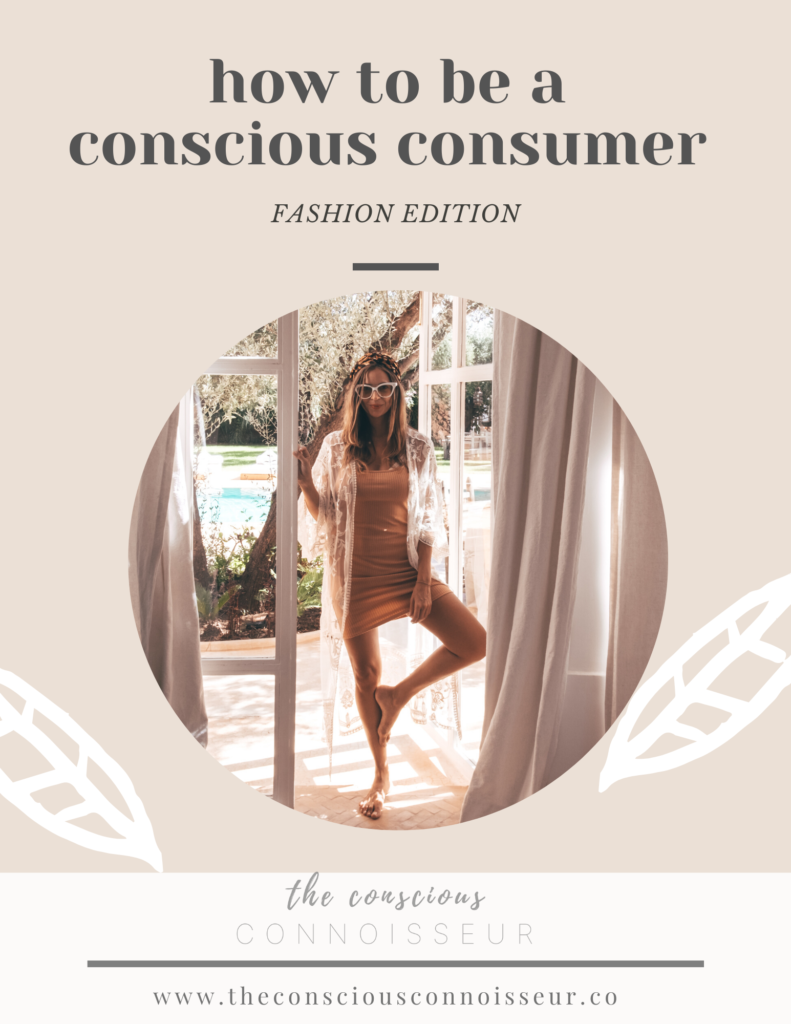
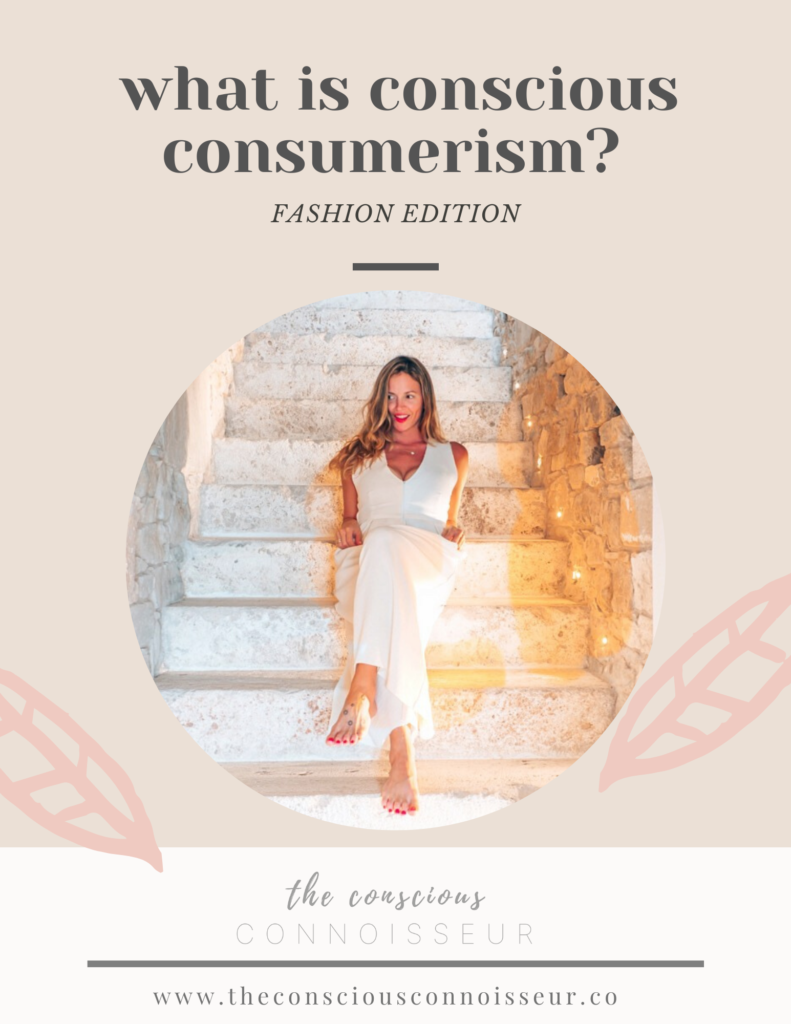
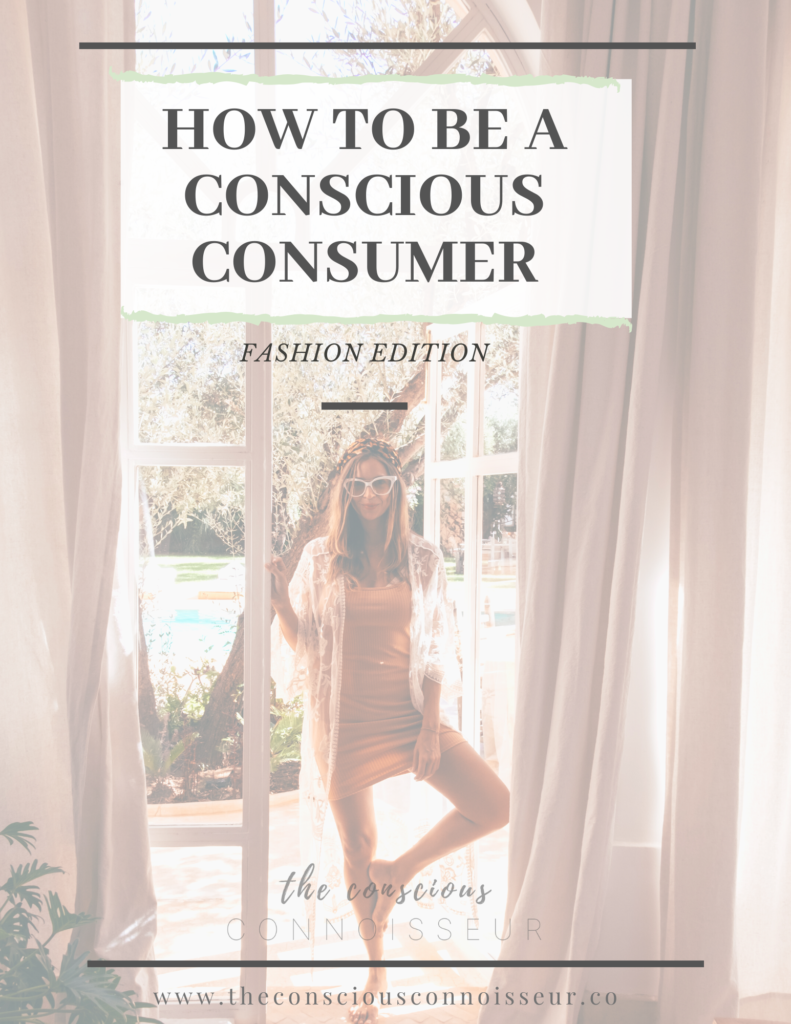

Found in
ethical brands, fashion, sustainability, sustainable fashion